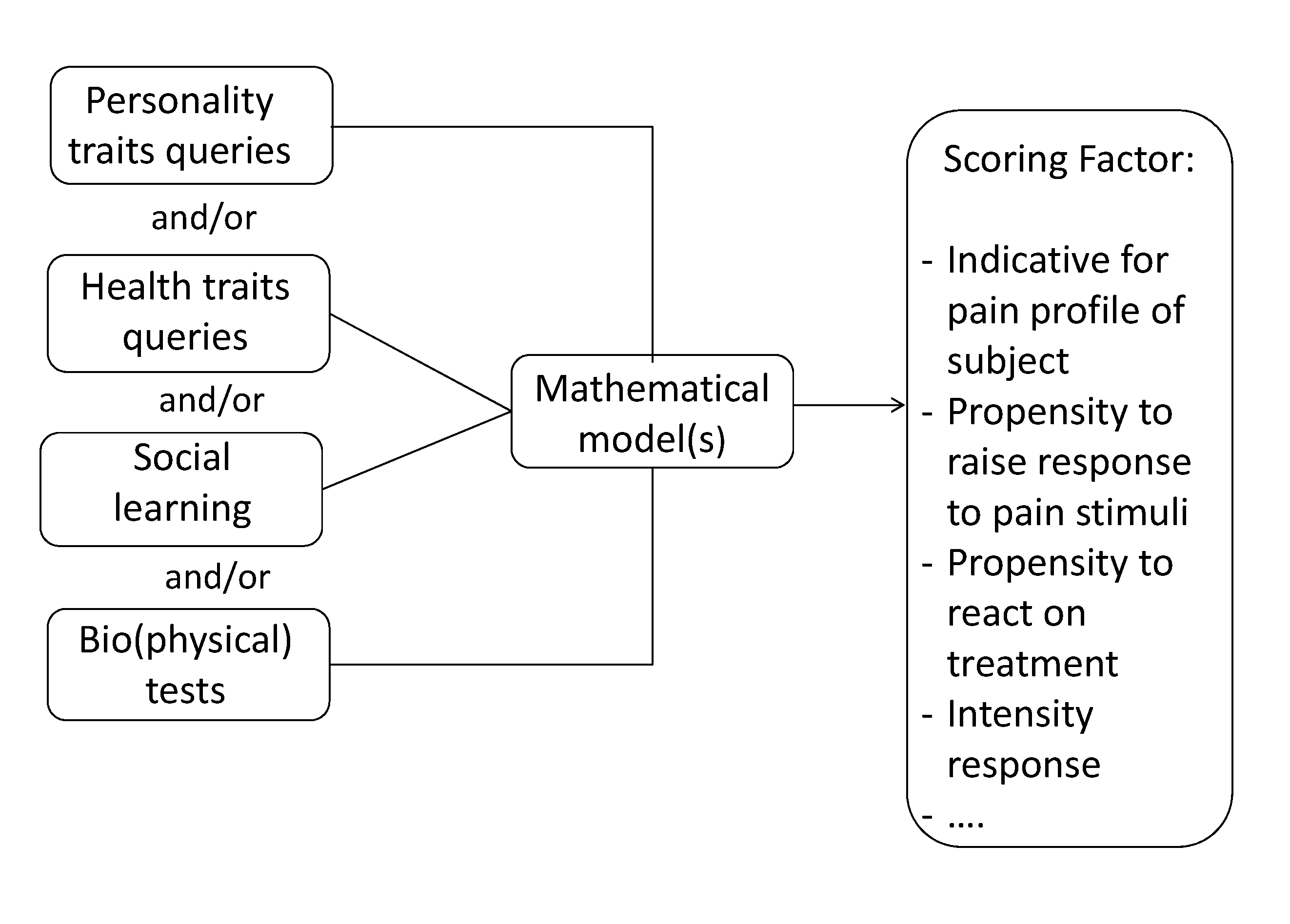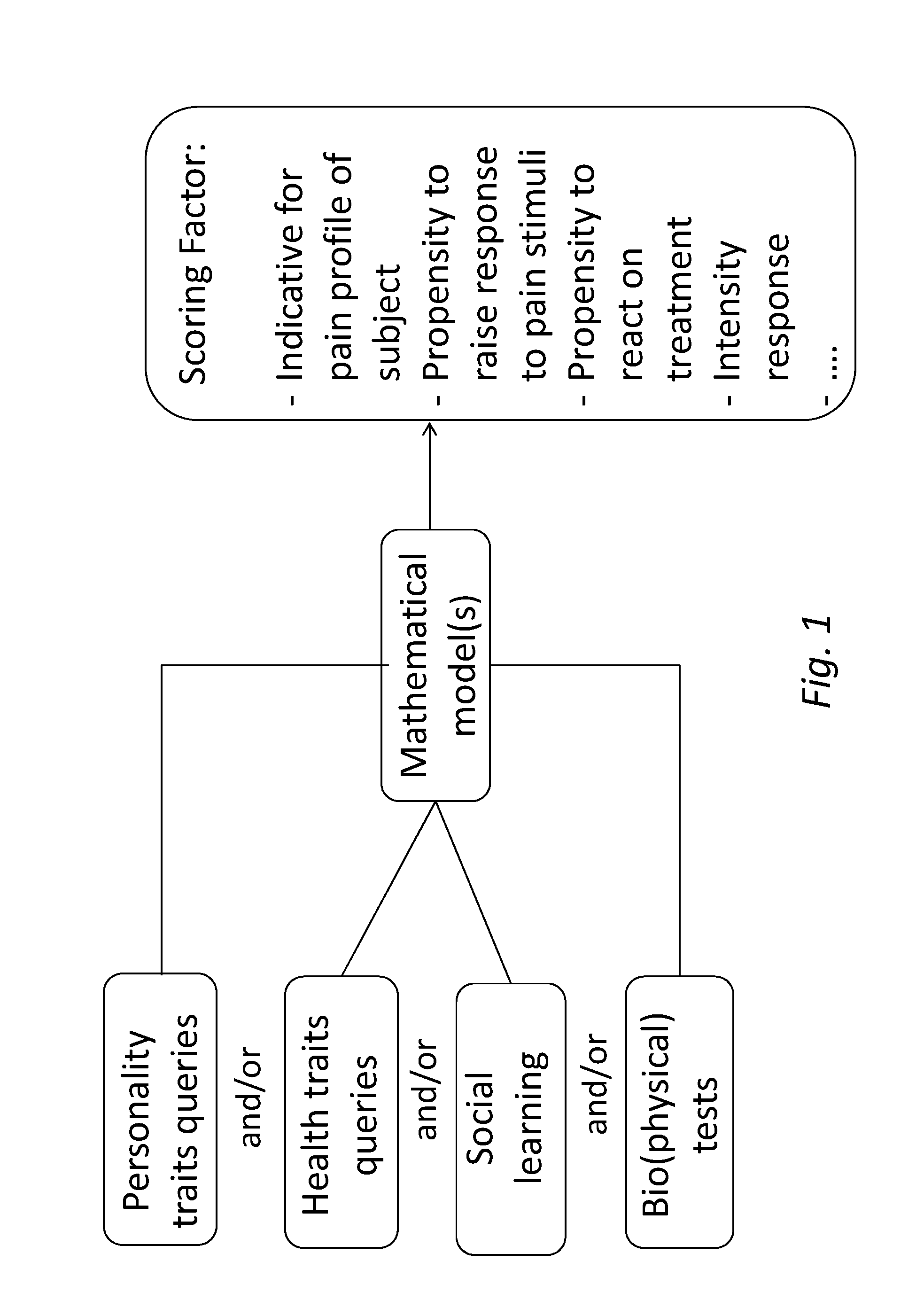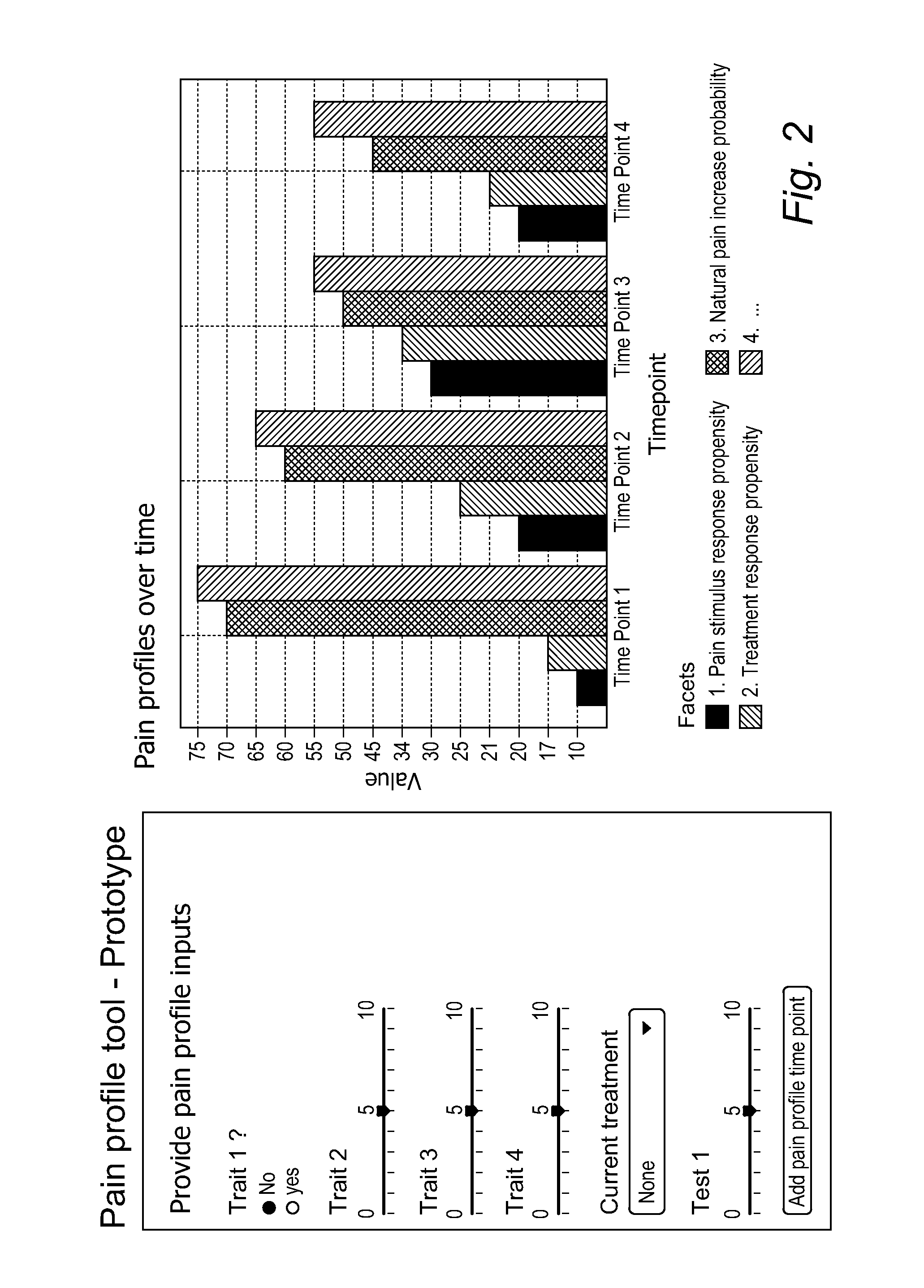Method and tools for predicting a pain response in a subject suffering from cancer-induced bone pain
a bone pain and pain technology, applied in the field of pain management and treatment, can solve the problems of reducing the functional status and affecting the quality of life of patients, and affecting the patient's quality of life, so as to achieve the effect of not posing a burden on patients
- Summary
- Abstract
- Description
- Claims
- Application Information
AI Technical Summary
Benefits of technology
Problems solved by technology
Method used
Image
Examples
Embodiment Construction
[0031]The present invention concerns a method for establishing a pain profile for a subject suffering from cancer-induced bone pain (CIBP) which can be used for various purposes within the field of pain management and treatment for such subjects. The current invention aims to provide an all-embracing methodology, taking into account all relevant aspects which play a role in the perceiving of pain by a subject.
[0032]Unless otherwise defined, all terms used in disclosing the invention, including technical and scientific terms, have the meaning as commonly understood by one of ordinary skill in the art to which this invention belongs. By means of further guidance, term definitions are included to better appreciate the teaching of the present invention.
[0033]As used herein, the following terms have the following meanings:
[0034]“A”, “an”, and “the” as used herein refers to both singular and plural referents unless the context clearly dictates otherwise. By way of example, “a compartment”...
PUM
 Login to View More
Login to View More Abstract
Description
Claims
Application Information
 Login to View More
Login to View More - R&D
- Intellectual Property
- Life Sciences
- Materials
- Tech Scout
- Unparalleled Data Quality
- Higher Quality Content
- 60% Fewer Hallucinations
Browse by: Latest US Patents, China's latest patents, Technical Efficacy Thesaurus, Application Domain, Technology Topic, Popular Technical Reports.
© 2025 PatSnap. All rights reserved.Legal|Privacy policy|Modern Slavery Act Transparency Statement|Sitemap|About US| Contact US: help@patsnap.com



